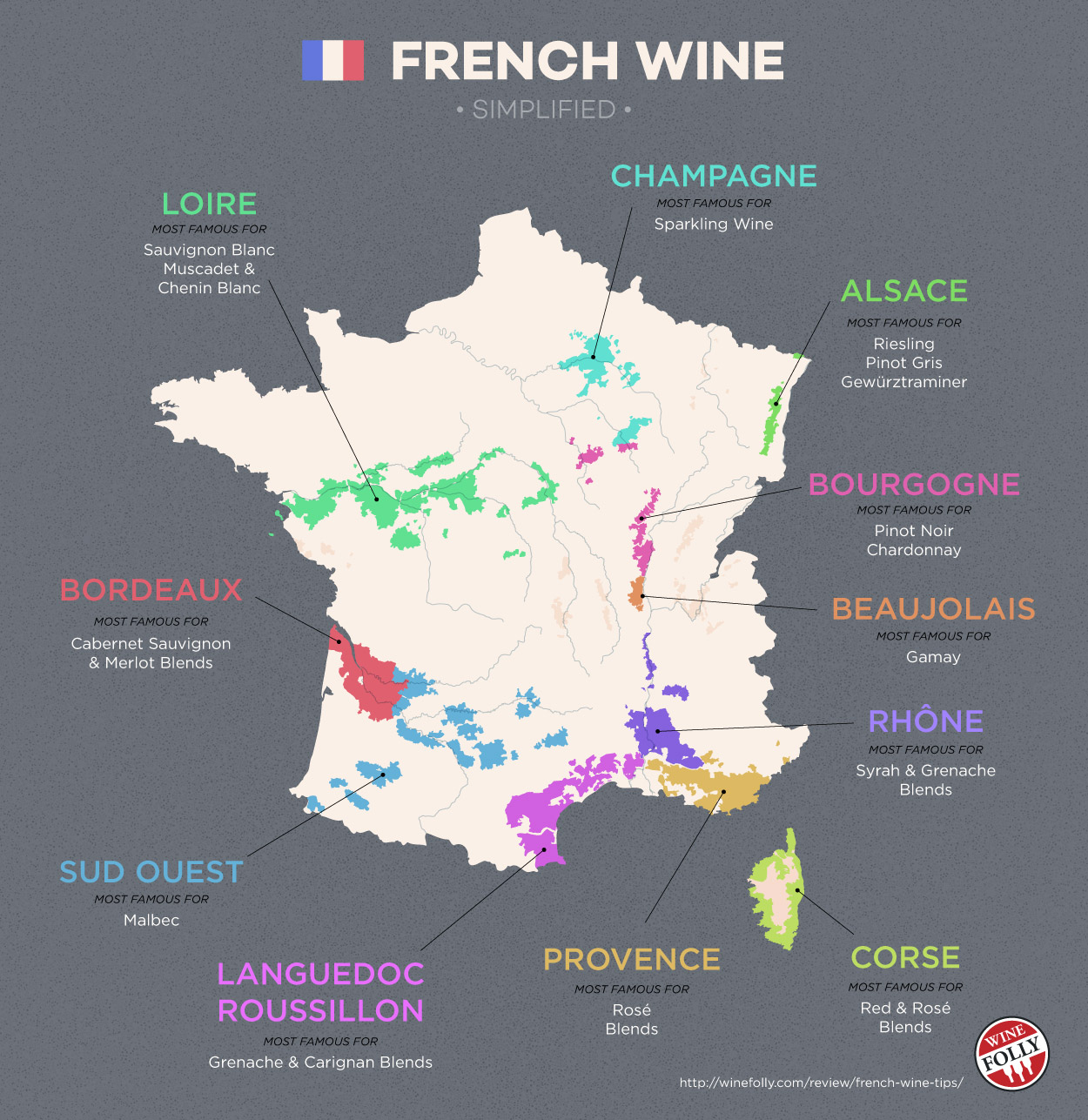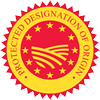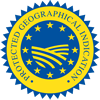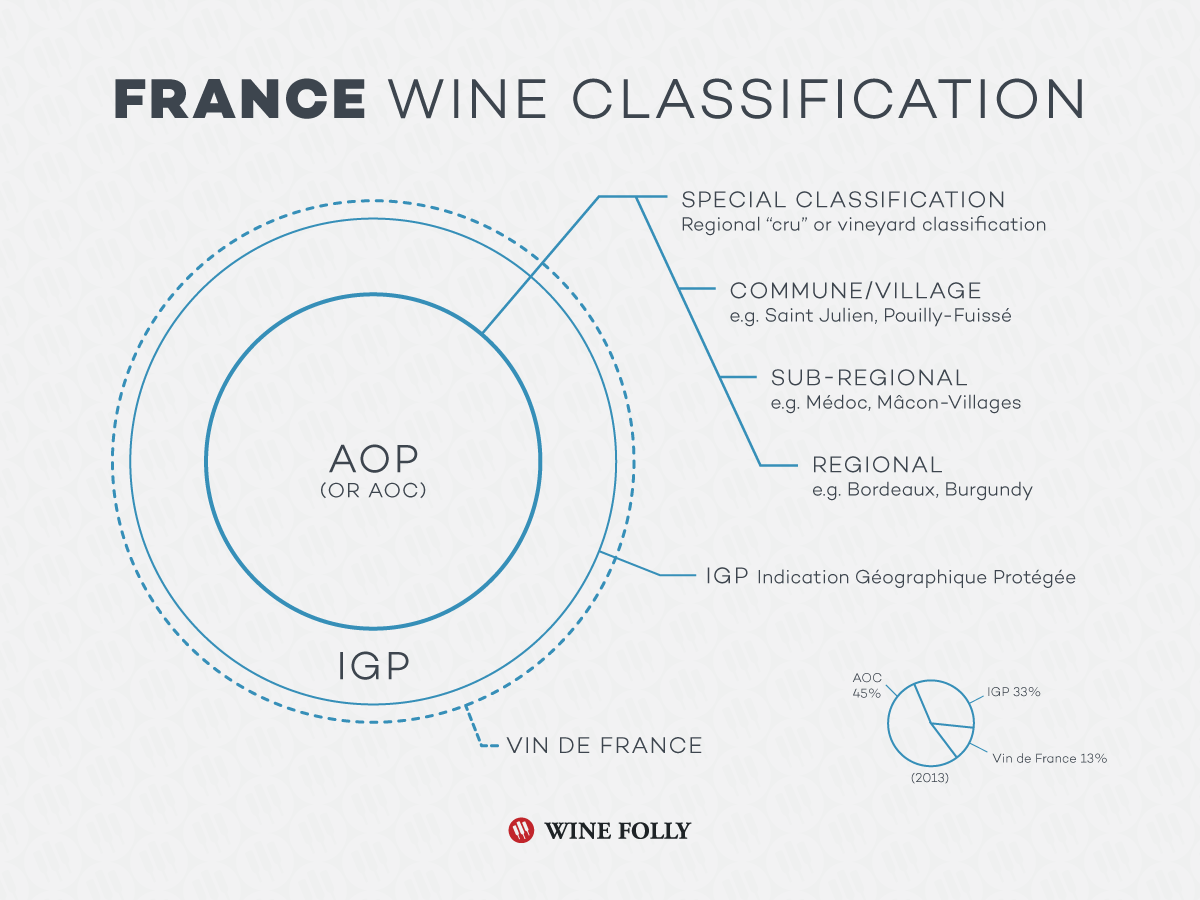Learn helpful information about French wine (by looking at the label) to find out what grape varieties are inside and what quality level they are.
Navigating a French Wine Label

France labels wines by region and not grape variety. This labeling behavior works well because there are 200+ unique varieties in France, and many wine regions blend grape varieties. So, when you look at a label, the first thing to pay attention to (besides the producer’s name) is the name of the region where the wine originates. This is your best clue to determine what grapes are in the wine.

Common French Wine Terms
Beyond knowing what’s inside the bottle, there are a myriad of other French wine terms that appear on labels. While several terms apply to all French wines, some are typical only in specific regions.
Here is a list of terms that you can find on French wine labels:
- Biologique: Organically produced.
- Blanc de Blancs: A term for sparkling wines to denote a white sparkling wine made with 100% white grapes (100% Chardonnay in Champagne).
- Blanc de Noirs: A term for sparkling wines to denote a white sparkling wine made with 100% black grapes (Pinot Noir and Pinot Meunier in Champagne).
- Brut: A term for sweetness level in sparkling wine. For example, Brut indicates a dry style.
- Cépage: The grapes in the wine (encépagement is the proportions of the blend).
- Château: A winery.
- Clos: A walled vineyard, which is common in Burgundy.
- Côtes: Wines from a slope or hillside (contiguous), usually along a river (e.g. Côtes du Rhône “slopes of the Rhône River”).
- Coteaux: Wines from a grouping of slopes or hillsides (non-contiguous) (e.g. Coteaux du Layon “slopes along the Layon River”).
- Cru: Translates to “growth” and indicates a vineyard or group of vineyards typically recognized for quality.
- Cuvée: Translates to “vat” or “tank,” however, in this instance, it denotes a specific wine blend or batch.
- Demi-Sec: Off-dry (lightly sweet).
- Domaine: A winery estate with vineyards.
- Doux: Sweet.
- Élevé en fûts de chêne: Aged in oak.
- Grand Cru: Translates to “Great Growth” and is used in Burgundy and Champagne to distinguish the region’s best vineyards.
- Grand Vin: Typical in Bordeaux to indicate a winery’s “first label” or the best wine they produce. Additionally, it’s common for Bordeaux wineries to have a 2nd or 3rd label at varying price tiers.
- Millésime: The vintage date. This term is common in the Champagne region.
- Mis en bouteille au château/domaine: Bottled at the winery.
- Moelleux: Sweet.
- Mousseux: Sparkling.
- Non-filtré: An unfiltered wine.
- Pétillant: Lightly sparkling.
- Premier Cru (1er Cru): Translates to “First Growth” and is used in Burgundy and Champagne to distinguish the region’s 2nd best vineyards.
- Propriétaire: Owner of winery.
- Sec: Dry (e.g. not sweet).
- Supérieur: A common regulatory term in Bordeaux to describe a wine with higher minimum alcohol and aging requirements than the base.
- Sur Lie: A wine that ages on lees (dead yeast particles), which gives a creamy/bready taste and increased body. This term is most commonly found on bottles of Muscadet from the Loire.
- Vendange à la main: Hand harvested.
- Vieille Vignes: Old vines.
- Vignoble: Vineyard.
- Vin Doux Naturel (VDN): A wine that is fortified during fermentation and is usually a sweet dessert wine.




French Wine Classification
French wines and wine labels are controlled by Appellation d’Origine Protégée or AOP, a wine classification system. This system was first developed in 1936 by Baron Pierre Le Roy, who also founded the wine regulatory board in France (called INAO). AOP is essentially a hierarchical system of rules and regulations that determine where the wines come from, what they are made of, and their level of quality. Generally speaking, the more specific the region is, the higher the rank.
French wine has three primary classification tiers:

AOP (Appellation d’Origine Protégée): This means the wine came from a specific regulated region which can be a large area (such as Bordeaux) or a specific area (Listrac-Médoc within Bordeaux). Each region has its own rules for allowable grapes, growing conditions, and minimum quality. Also, in English, AOP is called PDO (Protected Designation of Origin).

IGP (Indication Geographique Protégée) or VDP (Vin de Pays): An IGP is often a larger area with slightly fewer regulations than AOP. You’ll notice that IGP wines often have grape varieties on the label as well as the IGP zone. The term Vin de Pays is the pre-EU version of IGP and you will sometimes find wines labeled with Vin de Pays such as “Vin de Pays du Val de Loire.” Additionally, IGP is the same as PGI (Protected Geographical Indication).

Vin de France: This is the most basic regional quality labeling term for wines from France as a whole. Wines with “Vin de France” can originate from anywhere in France or be a blend of regions. Vin de France wines often have the grape variety on the label.


